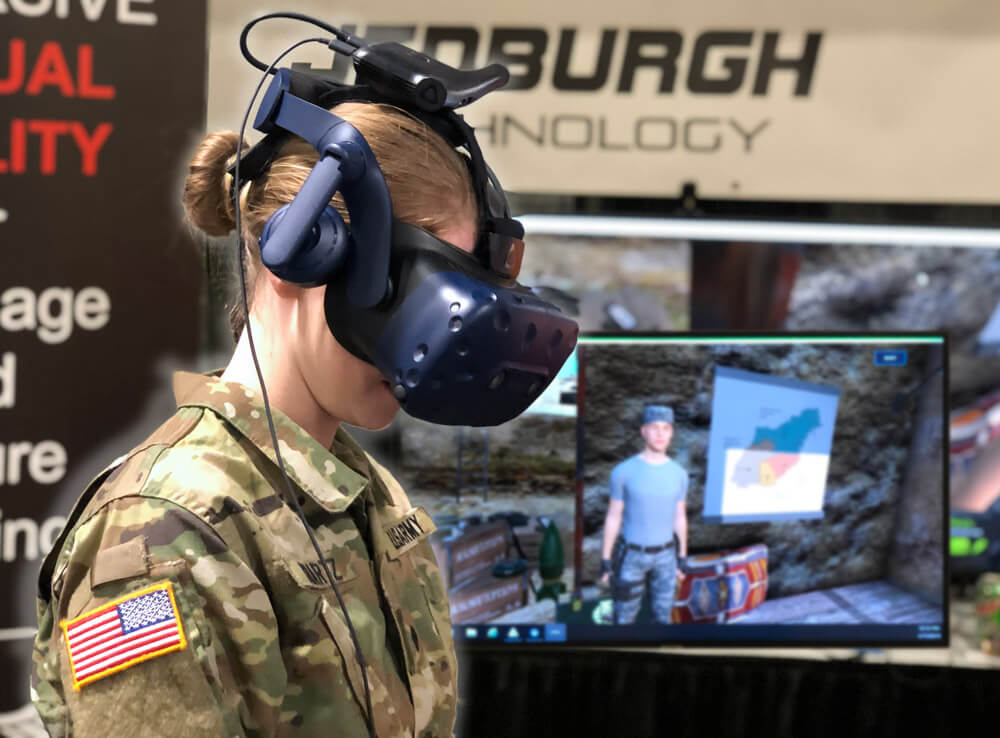Takes Prototype Testing in a New Direction
The world is moving into the future, and the U.S. Army is on the cutting edge of that transition. In this modern world of unmanned aircraft, virtual reality and self-sustaining diagnostics, the practical implementations of new technologies have already begun to change our world – and our military – for the better. A fine example of one such modern technology is Operation Overmatch. Designed to provide a safer environment for U.S. Soldiers to test new equipment, techniques and strategies, Operation Overmatch offers the benefits of in-field testing, but in a low-risk, low-cost environment.
The video games of 2018 are a far cry from the pixelated screens of the past. Gaming is now a valuable medium for both creators and consumers to test the limits of their imaginations. From the high-definition graphics of the stereotypical video game console, to the next-level immersion of virtual reality gaming, video games are no longer just a form of entertainment. Gaming is now a way for companies to train employees, and for educators to teach children.
Operation Overmatch is an embodiment of this vanguard application of video games. It is a video game, but that label alone is somewhat reductive. It is more than a game – it is a tool.
Developed by the U.S. Army Capabilities Integration Center (ARCIC) and the Army Game Studio, the Overmatch gaming system uses Early Synthetic Prototyping (ESP) – the process of utilizing game environments to gauge new designs and concepts early in the acquisition cycle. Overmatch could be used to test anything from vehicles, to equipment, to mission strategies.
From a safety standpoint, testing in a gaming environment is a vast improvement over in-the-field testing sessions. While uncommon, testing casualties sometimes occur. By testing in the Operation Overmatch environment, Soldiers are safer than ever before, and preventable casualties are avoided entirely. Since safety is not a concern, players have the opportunity to take in-game risks, and experiment with new techniques and approaches that they may not otherwise be willing – or allowed – to take.
The inherent cost associated with developing new technologies and equipment could be dramatically impacted thanks to these virtual environments. Now, when a prototype is designed, it can be tested in a video game before huge resources are spent on what may be an impractical and hence, quickly outmoded prototype. Soldiers can test prototypes in Operation Overmatch, and instantaneously communicate their questions, comments and concerns.

A level of speed is also to be gained through the use of virtual testing environments. As an ESP is created, it can be fielded to Soldiers for testing in Operation Overmatch in a matter of days versus the months or even years required for traditional prototyping. Then, as Soldiers test the ESP, feedback is provided in real time, allowing changes and adaptations to be made by developers almost immediately. The time it takes for prototypes to get from the development stage to Soldiers for testing, and the time it takes for testing feedback to get from Soldiers to the prototype developer, is decreased exponentially. This new technology allows communications to flow back and forth faster than ever.
In his speech at the Association of the U.S. Army’s annual conference last October, MG Bo Dyess, acting director of ARCIC, said that the Army wanted to leverage the time Soldiers already spend playing games like World of Warcraft and Call of Duty. Since gaming is already regularly used in Soldier training, the Army decided to create a gaming environment where Soldiers could test equipment on a complex virtual battlefield and provide real-time feedback on the experience, he said.
Operation Overmatch went into beta testing in October of 2017, and Soldiers are encouraged to sign up as beta users on the system’s website at www.OperationOvermatch.com.
The game is formatted for two teams of eight Soldiers each to compete against each other. “Soldiers want to win, and they will inherently innovate to gain an advantage over other players,” said LTC Brian Vogt, ARCIC’s early synthetic prototyping project lead, when explaining the game’s competitive design in an interview held last year. “Competition raises the level of participation and engagement in game environments,” he said.
The beta version of the system currently offers a limited number of offensive and defensive scenarios that are set in urban environments. According to LTC Vogt, the game’s developers plan to expand the number of offered scenarios, and additional settings including deserts and wooded areas will be added. LTC Vogt also said that the vehicles and equipment featured in the system – which include an unmanned ground combat vehicle, miniature unmanned aerial vehicles and a mobile protected firepower vehicle – are near-term emerging capabilities.
As stated on the Operation Overmatch website, “Innovation comes by experimentation.” Truly, no system or tool has been better suited to diverse experimentation than this gaming system. Soldiers could have more involvement and influence with new technologies than ever before. Every day, the U.S. Army is improving and refining, and Operation Overmatch could be a tool that will help set the Army’s accelerated pace into the future of prototyping.
By Staff Writer Liam Griffin
VIDEO




